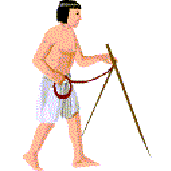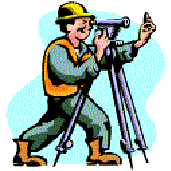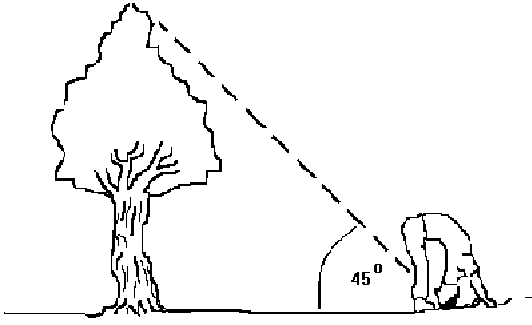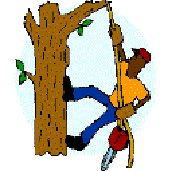Early man soon learned that joining forces with other people by
living in communities was a way to keep safe. By pooling resources,
such as their strength to do heavy jobs and their weapons, they
could get more food, as well as wood for fires and for building,
which they could share .
But to get
jobs done most effectively and to make sure that goods were shared
fairly, tools were needed. Some of the first mathematical tools man
developed where to help them measure. They had to measure the
passing of time, find ways to divide up pieces of land, develop a
system to help keep track of the number of animals they owned and
ways to measure grain so that they could exchange goods with each
other.
Another early way of measuring that was developed was to find
the heights of trees. People needed to know if the wood would be
large enough to use as strong beams for supporting a building, or
to make a boat, maybe even to act as a roller for moving large
stones for buildings.
Over time,
foresters, builders, surveyors, map makers and scientists have
created special tools to help them measure the height of trees,
buildings and other tall structures very accurately. One of the
tools is called a theodolite, the illustration shows a surveyor
using one. You may have seen one on a building site. It is still
important to measure tall trees - which are in fact the largest and
oldest living organisms. Did you know that the tallest tree in the
world is in Redwood National Park in California? It's as tall as a
30 storey building! That's about 360 feet!!
Some of the early ways of measuring the height of tall structures
are still in use today. They require very little equipment and can
be used out in forests where special equipment is hard to come by.
Why not try some of these methods for yourself? If you try more
than one way you can then compare your results to discover if the
answers you get are close - they should be. After all, the building
or tree doesn't change its height because you change your
measurement method! You might be surprised just how accurate you
can be.
Native Americans had a very interesting and unusual way of seeing
how high a tree was. They would bend over and look through their
legs!
They would walk far enough from the tree to a
find a place where they were just able to see the top of the tree
(from their upside down position). The distance from this place to
the base of the tree was approximately the height of the
tree.
Does it work? Actually it does and the reason is
rather simple. For a normal, fit and healthy adult (one who can
bend over in such a way), the angle that is formed as they look
through their legs is approximately 45 degrees. The angle between
the tree trunk and the ground is fairly close to 90 degrees and,
using what you know about the angles and sides of a triangle you
can work out the height of the tree. The height of the tree and the
distance from the tree to the person is about equal. Therefore,
knowing the distance to the tree gives you a good idea about the
height of the tree. It certainly saves having to carry heavy
surveying equipment around.
Loggers are people who cut down trees. They
learned a great deal from people who lived in forests for
generations, like the Native Americans. They might be cutting down
trees that are over a certain height and it is important that they
have an easy way to estimate which of the trees around them are to
be cut. You can try and estimate the height of a tree or a building
using their method.
You need a partner who stands at the base of the tree. Move a
distance away from the tree then, holding your pencil at arms
length, between your thumb and forefinger so that it brackets the
height of your partner (the top and bottom of the pencil coincide
with the top of the head and the bottom of the feet of your
partner). Now, use this length to step out the height of the tree
in "pencil lengths". You can now measure the height of your
partner and multiply this by the number of pencils high the tree
is. This is worth doing several times from different distances and
working out an average to improve the accuracy.
This is quite easy, once you have the knack. Describing the method
makes it sound way more complicated than it is. After a couple of
tries, you'll be able to apply for a lumberjack's job!
Fancy trying a third method? Don't forget to be comparing the sizes
that you are getting for the tree/building height to see how they
match up.
You will need a partner again, and another thing that you will need
is a sunny day. You might have to pick your time for this
experiment.
We'll call this method Measuring Shadows. Wait until the tree casts
a shadow then measure the length of the shadow. Stand next to the
tree and have a friend or parent measure your shadow. Be sure to do
it as soon as you can after you measure the tree shadow! Measure
your height to find out how tall you are. Now for the good part -
get those calculators out! You will need the 3 measurements:
- the length of the tree's shadow
- the length of your shadow
- your height
Divide the length of the tree's shadow by the length of your
shadow. Then multiply the answer by your height. This will tell you
how tall the tree is!
(Tree's Shadow / Your Shadow) x Your Height =
Tree's Height
Can you see why this works? Why not have a go?





